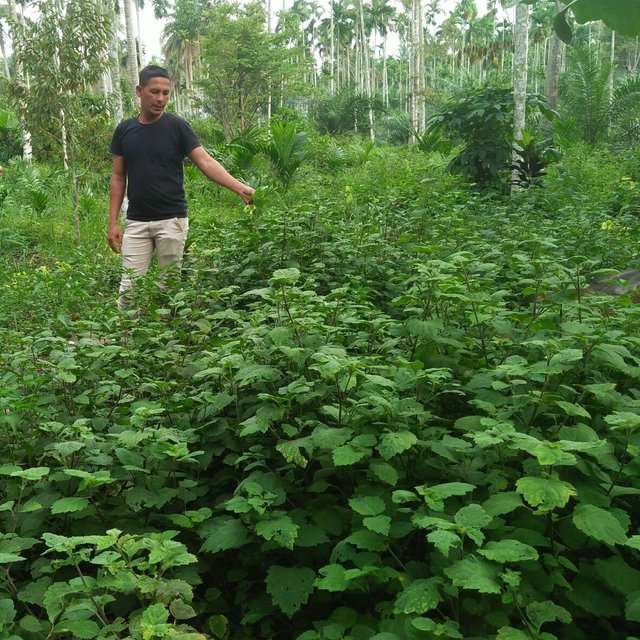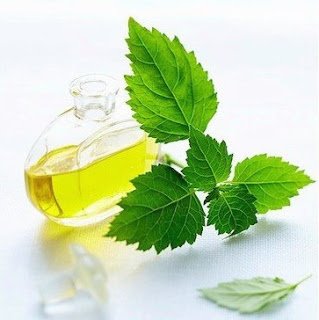A REVIEW OF ESSENTIAL OIL IN INDONESIA
UNDERSTANDING OF ESSENTIAL OIL
Essential oil is one of the results of the rest of the metabolic process in plants or the results of secondary plant metabolites, which are formed because of the reaction between various chemical compounds in the presence of water. The oil is synthesized in glandular cells in plant tissues and some are formed in resin vessels, such as turpentine oil from pine trees. Essential oils other than those produced by plants can also be formed from the degradation of triglycerides by enzymes or can be made by synthesis.
Essential oils are also known as etheric oil (aetheric oil), essential oils, flying oils or aromatic oils, are a large group of vegetable oils or derived from plants which are basic ingredients of natural perfumes or oils (for treatment) and have distinctive aroma. In the trade of essential oils known as fragrance oils.
CHARACTERISTICS OF ESSENTIAL OIL
Essential oils are volatile because the vapor points are low. The composition of its component compounds strongly influences the human nerve (especially in the nose) so that it gives certain psychological effects (strong smell). Essential oils have a bitter taste (pungent taste), smell nice according to the smell of the producing plants and are generally soluble in organic solvents but not soluble in water.
ESSENTIAL OIL SOURCES
Essential oils can be sourced from any part of the plant, from leaves, flowers, fruit, seeds, stems or skin and roots or rhizome. Various types of plants that are cultivated or grown by themselves in various regions in Indonesia have great potential to be processed into essential oils, both superior and potential to be developed. Especially in Indonesia there are around 40 types of essential oils producing plants, but only some of them have been used as commercial sources of essential oils.
As described above, the metabolites in the form of essential oils are stored by plants in various parts, including:
Root: Fragrant Root, Yellow
Leaves: NIlam, Cloves, Lemon Lemongrass, Citronella, Betel, Mentha, Kayu Putih, Gandapura, Grapefruit, Karmiem, Krangean, Kemuning, Kenikir, Turmeric, Selasih, Kemangi.
Seeds: Nutmeg, Pepper, Celery, Avocado, Cardamom, Klausena, Kasturi, Kosambi.
Fruit: Fennel, Orange, Cumin, Kemukus, Anis, Coriander.
Flowers: Cloves, Kenanga, Ylang-Ylang, Jasmine, Savor Night, Cempaka Kuning, Daun Seribu, Gandasuli Kuning, Srikanta, Angsana, Srigading.
Bark: Cinnamon, Acacia, Lawang, Cendana, Masoi, Selasihan, Sintok
Branch: Cemara Gimbul, Cemara Kipas
Rhizome: Ginger, Turmeric, Bangel, Baboan, Jeringau, Kencur, Lengkuas, Lempuyang Sari, Black Gathering, Temulawak, Princess Gathering.
All parts: Akar Kucing, Babandaton, Inggu, Salasih, Sudamala, Trawas.
ESSENTIAL OIL BUSINESS OPPORTUNITIES
Market demand for essential oils both domestically and abroad is increasing. Domestic food, pharmaceutical and cosmetics industries are markets for essential oils or derivatives of essential oils. The market potential of essential oils is still largely untapped in the country, because in Indonesia the production of essential oils is still processing crude essential oils and industries that process essential oils into their derivatives are still limited. The derivative products needed by the domestic food, pharmaceutical and cosmetic industries are still obtained through imports.
Essential oil is one of the potential agro-industry export commodities as a source of foreign exchange. Some volatile plants that are superior and rapidly growing in the world market include Patchouli, Citronella, Cloves, Ginger, Nutmeg, Pepper, Cinnamon, Sandalwood, Jasmine, Fragrant Roots, Cananga, Eucalyptus and Kemukus.
--!--
PATCHOULI PLANTS (Pogostemon cablin Benth.): SUPERIOR IN PRODUCING ESSENTIAL OIL
INTRODUCTION
Patchouli plants have been known for a long time as important essential oil producing plants. These plants can contribute to foreign exchange contributions of more than 50% of the total export of Indonesian essential oils. Indonesia is the largest supplier of patchouli oil on the world market with a contribution of 70%.
Most patchouli oil products are exported for use in the perfume, cosmetics, antiseptic and insectide industries. Besides that it is also used in the world of medicine, such as in the treatment of aromatherapy, which is useful for physical, mental and emotional healing.
Patchouli oil can hold or bind the fragrance of other fragrances so that the scent does not quickly disappear and last longer. Patchouli oil has a good chance because demand is always increasing and until now there are no substitute products.
Along with the increasing population and habits of people who tend to use cosmetics and fragrances as a form of people's lifestyles, the need for perfume has increased every year, both domestic and export.
POTENTIAL AND DISTRIBUTION OF PATCHOULI PLANTS IN INDONESIA
According to the Directorate General of Plantations of the Republic of Indonesia, areas of patchouli production centers in Indonesia are in the provinces of Aceh, North Sumatra, West Sumatra and South Sumatra. Then it developed in several other provinces, such as Lampung, West Java, Central Java, East Java, Central Kalimantan and other regions. The average productivity of patchouli oil is still low, around 198 kg / ha / year.
Patchouli which grows in the low to medium (0 - 700 m above sea level), the oil content is higher than patchouli which grows on high altitudes (> 700 m above sea level). Different land characteristics, topography, and climate will cause differences in the physical and chemical properties of patchouli oil. Patchouli is very sensitive to drought, so long drought after harvest can cause plant death. Patchouli can grow on various types of soil (andosol, latosol, regosol, podsolic, and cambisol), but grows better on loose soil and contains a lot of topsoil.
In order for patchouli plants to grow optimally, patchouli plants require a high intensity of sunlight irradiation ranging from 75% -100%. Areas covered with patchouli can grow well but the oil content is lower than in places with maximum light intensity. Patchouli that grows in low light has a smaller root, a limited amount and is composed of thin-walled cells, which results in a decreased rate of photosynthesis. The cause of the decline in photosynthesis is due to the presence of rapid chlorophyll photo-oxidation, which destroys leaf chlorophyll. Optimal light intensity reduces air humidity so that the transpiration process takes place quickly. The intensity of light that is too low will limit photosynthesis and cause food reserves tend to be more used than stored. Light intensity also affects the color and size of leaves.
An Exploration Patchouli Crop Variety Lhokseumawe, Aceh

In the picture it appears that patchouli plants are very fertile. This plant is around 4 months old, and can be harvested at the age of 6 months. Harvesting is done by cutting the stems only. While the base of the stem is still left, so that new shoots will emerge and develop into individual new plants.

Then the crop results are dried and distilled. To get essential oils, several methods of distillation can be used, such as the following:
- Distillation with a boiled system (Water Distillation)
- Distillation with water and steam (Water and Steam Distillation)
- Direct Steam Distillation
The result of the process, we can see like the picture below.

That all. Thank you.
✅ Enjoy the vote! For more amazing content, please follow @themadcurator!
Hello @transio! This is a friendly reminder that you have 3000 Partiko Points unclaimed in your Partiko account!
Partiko is a fast and beautiful mobile app for Steem, and it’s the most popular Steem mobile app out there! Download Partiko using the link below and login using SteemConnect to claim your 3000 Partiko points! You can easily convert them into Steem token!
https://partiko.app/referral/partiko
Congratulations @transio! You received a personal award!
Click here to view your Board
Do not miss the last post from @steemitboard:
Vote for @Steemitboard as a witness and get one more award and increased upvotes!
Congratulations @transio! You received a personal award!
You can view your badges on your Steem Board and compare to others on the Steem Ranking
Do not miss the last post from @steemitboard:
Vote for @Steemitboard as a witness to get one more award and increased upvotes!